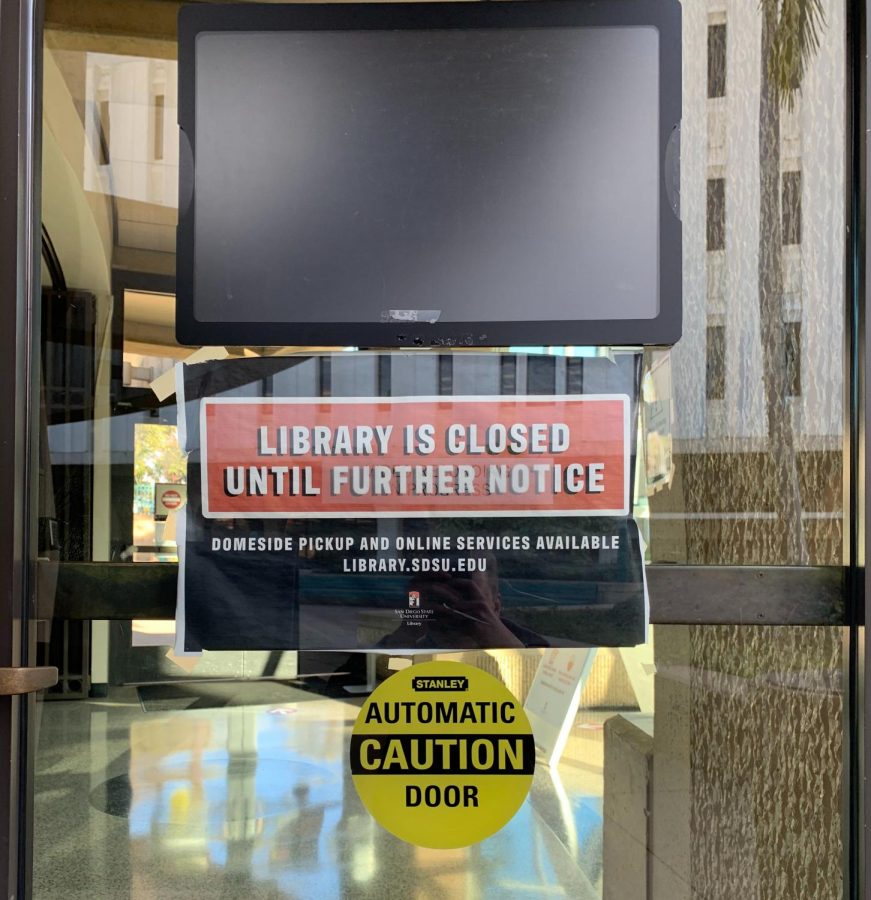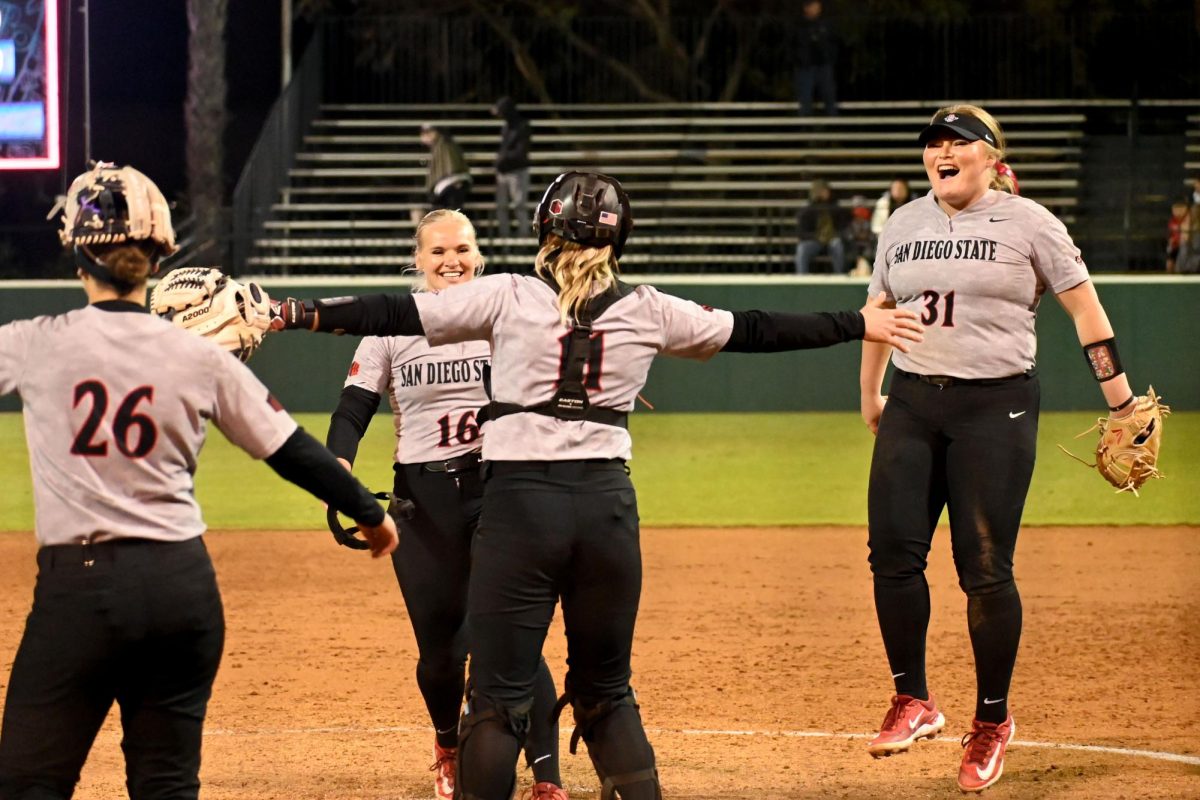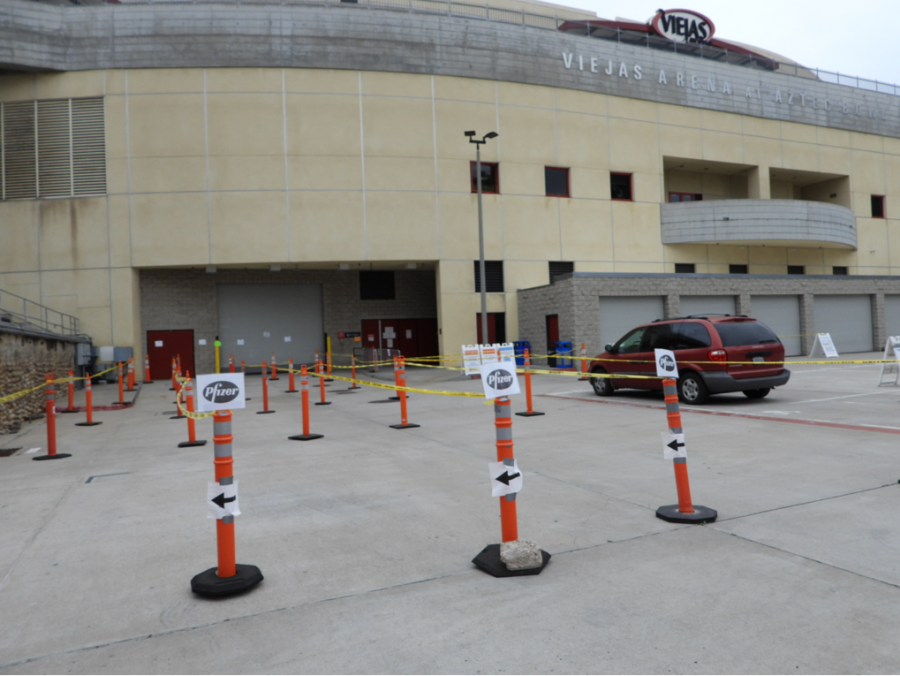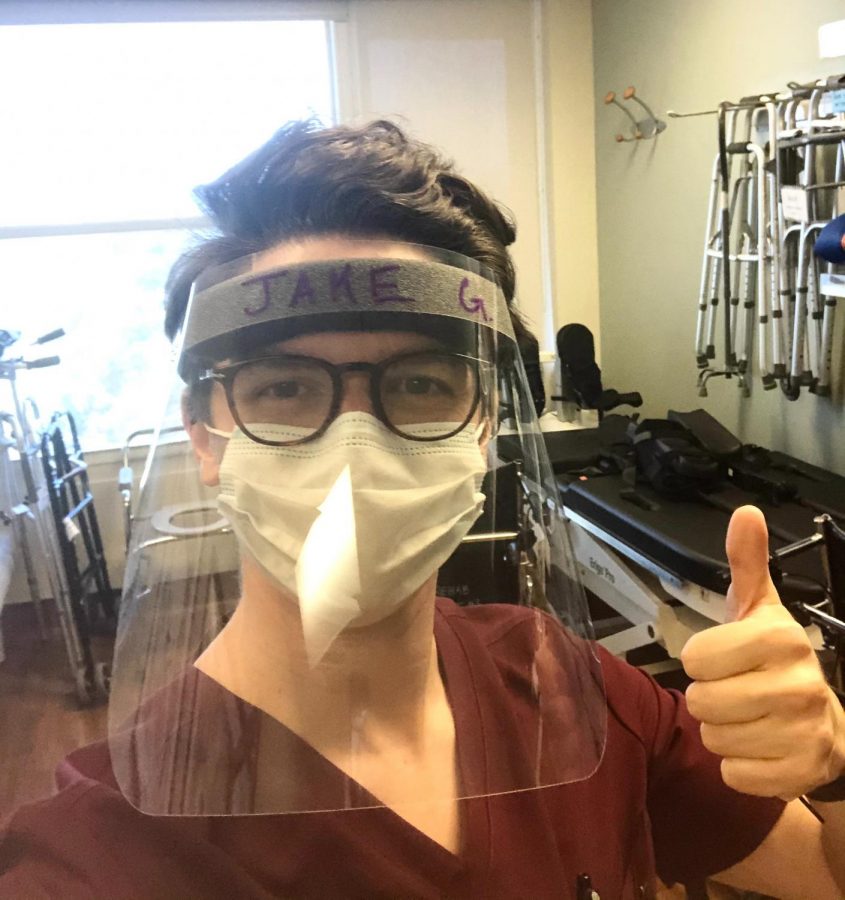Students living on or near campus in the College Area have no practical place to study outside of their residence hall, apartment or house.
Despite advertising ‘outdoor study spaces’ on the university website, students need a space free of weather conditions and outside noise to maximize focus and productivity. There is no question Southern California weather is more suitable for outdoor studying than other places. Though even on the clearest of days, it can be hard to see your laptop screen due to sun glare or keep track of papers blowing in the wind.
San Diego State’s Love Library needs to re-open with socially distanced study areas and an enforced mask mandate.
California COVID-19 regulations allow for ‘purple tier’ counties to operate public libraries with a 25% capacity limit. Like grocery stores and hair salons, both the San Diego Public Library and the San Diego County Public Library branches are operating under the “guidance of the California Department of Health and San Diego County’s Public Health Office,” according to their respective websites. Conversely, SDSU has made the internal decision to close the library for the remainder of the school year, “in order to lessen opportunities for face-to-face interaction in public spaces.”
The California Public Library has outlined precise policies to allow public libraries throughout the state to reopen safely. The guidelines include floorplan reconfigurations, disinfecting regularly touched surfaces, enforcing the mask mandate and screening patrons prior to entry. There are steps that California has taken to allow libraries – a critical community resource in most areas – to reopen, but SDSU closed Love Library despite the flexibility provided.
Ironically, SDSU chose to close the on-campus library for the remainder of the spring semester due to concerns over face-to-face interaction between students studying but allowed 1,700 students to live on-campus this semester. Freshman resident Stephan Keller of Toltec Residence Hall said there was very little enforcement of COVID-19 regulations.
“The mask enforcement is pretty limited, there’s really none at all actually,” Keller said. “There’s a fair amount of congregation between students without masks.”
Another on-campus resident, Austin Weber, commented on the circumstances in Cuicacalli Hall.
“Masks are enforced in the main lobby, but once you get into the elevator or hallways no one’s stopping you from taking it off,” Weber said.
These statements make it all the more questionable as to why the library is closed, considering students are already crammed into residence halls where social distancing is minimally enforced.
The stark contrast between library regulations and those of on-campus residence halls makes one question clear: SDSU values housing revenue over academic resources for students. Further, the school is certain to save money on operating costs as the library remains shuttered.
Students that chose to return to campus for the school year should have an adequate place to study aside from their personal residences. Isolation policies in response to the pandemic have heightened the rates of anxiety and stress across all demographics, which has made getting out of the house that much more important since the virus began.
It is a poor mental health practice for anyone to spend their entire day in one place, let alone with multiple roommates potentially living in a cramped apartment or home. Opening the library back up, even with a minimal capacity, would at least give students the option to leave their residences and study somewhere different.
After all, everyone can use a little change of scenery.
When reached for comment, SDSU media officer Lainie Fraser had this to say about the situation.
“The library was physically closed during the fall semester after close consultation with the San Diego County Health and Human Services Agency and in line with county guidelines, though physically distanced support and resources will be re-assessed as the semester progresses.”
Aside from Love Library and its study spaces being physically closed, most of the tools and resources they offered before are still accessible to students. According to the library’s COVID-19 News & Resources website, students can still access wireless printing, online tutoring and contactless pickup of print books and research materials. The entire collection of library materials are also available to students online. These modifications enable students to continue to use valuable academic resources that are imperative to student success.
These virtual resources provided should not be overlooked when assessing SDSU’s efficacy in dealing with the circumstances of hosting students on campus during a pandemic.
To accommodate students in the library, there are numerous strategies SDSU can employ to maintain safe and healthy spaces. Since the library can only open with a 25% capacity, demand will surely be high. Online signups for one or two-hour time slots could allow for more students to use the library’s study space and tables could be disinfected in between usage. Between the six floors of the library, a mask mandate should be enforced and tables could be effectively spaced at least 6 feet apart.
Across town, UC San Diego is employing such policies to ensure students have a sophisticated place to study.
The Geisel Library at UCSD remains closed but the university has opened the Biomedical Library Building as an alternative study space for students with a reservation. Students can stay no longer than 3 hours, must study individually and can only use the building once a day.
Modified policies like these can allow students to study while preventing the spread of COVID-19.
The pandemic has forced all aspects of our world to adapt and respond to a crisis unlike any other. Resiliently, our world has responded with innovation that has allowed our society to function despite the circumstances.
SDSU allows its students back to campus for their studies but has not provided enough places to study.
So my question is as follows if we can continue to board airplanes – albeit with a face mask and a seat in between passengers – or safely go to the grocery store, why can’t an enormous library open its doors for a reduced capacity of students adhering to COVID-19 guidelines?
Willem Quigley is a sophomore studying journalism and international studies. Follow him on Twitter @willquigz11.













